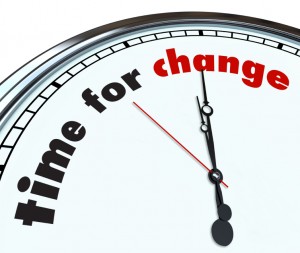Do you want to win? No you don’t. Not really. You want to win and win and win and win!
Winning is rarely about doing it once and walking away. Winning is about sustaining performance: sustaining competitiveness: about getting to the top and staying there.
Lots of people, teams and companies win once – very few are able to adopt the thinking, systems and practices that enable them to sustain competitiveness year after year after year.
Why is sustainable competitiveness so important?
Sustaining competitiveness is critical for one reason…..no one goes from being uncompetitive to winning.
There are three types of organisations in the world:
- Not competitive: those organisations devoid of the ideas, people, passion and knowledge to be competitive in their industry – they are doing nothing right;
- Competitive: those organisations who are doing most things well and are close to their peak performance level – they are doing most things right;
- Winners: those at the top of their industry – at the peak of their performance – with the world at their feet – they are doing everything right.
Being competitive means you can launch a winning new product campaign or successful sales program or drive into a new market from a position of relative strength. It is almost impossible to go from last to first in a single year – but from a position of competitiveness, anything is possible.
However, for some reason most organisations are notoriously bad at sustaining competitiveness.
With very few exceptions around the world, most organisations, sporting teams and even people feel the need to (unnecessarily) go through the Performance Cycle:
Performance Cycle Stage one: Not Competitive: the organisation is failing to perform and struggling to survive;
Performance Cycle Stage two: Striving for Success:A passionate person and / or motivated team ignites the desire to succeed and inspires the organisation to strive for success. The acceleration of progress comes from embracing change and learning and the commitment to turn learning into action;
Performance Cycle Stage three:Creatingthe Right Culture: The right people and the right environment are in place and the opportunity has been created for the organisation to be successful;
Performance Cycle Stage four: Success: The organisation gets to the top but then loses momentum by ceasing to change and learn at an accelerated rate. They adopt a “secret formula” mentality, i.e. “we know what it takes to win, therefore all we have to do is repeat what we did last year and we will keep winning”. The have forgotten the fundamental principle of winning: Success is a moving target! In the meantime the competition is accelerating their learning, their improvement and their performance – and they are determined to become the next no 1;
Performance Cycle Stage five: The Fall: Things start to fail. Management and staff get sacked, reviews, reviews and more reviews are commissioned, finally the board is overthrown, there is public brawling and the organisation is at the brink of collapsing altogether…… And we are back at stage one again – if you are lucky!
Most businesses, sporting organisations and even people believe it is inevitable that they will perform in cycles: good days and bad days, upturns and down turns, bears and bulls – yada yada yada.
They believe, that there will always be times when they are performing well – and times when they are performing poorly: and that is why they fail.
The performance cycle of an organisation can be compared to a clock – the Performance Clock.
- At 10 o’clock, the organisation is hungry for success and changing rapidly. They are accelerating their rate of change by learning fast and by being innovative, creative and committed to success;
- At 11 o’clock, the organisation is close to their best. They are consistently performing well, stock prices are rising and they are continuing to strive for success. Most importantly, they have created a culture which has a high likelihood of succeeding;
- At 12 o’clock – the organisation wins! They become recognised for their innovation, their creativity and their industry leadership – they are the benchmark – they are at the peak of their performance cycle.
But then, for some reason, a funny thing happens……
Often when an organisation is at the top of its performance cycle it stops doing many of the things it was doing to make it successful.
- 1 o’clock and the organisation stops being creative and open minded. They start believing that their way is the only way and that they have the infallible secret formula for success. This is the beginning of disaster!
They begin losing market share. Their competitors begin to make inroads in the organisation’s traditional markets. Their stock prices fall.
- 2 o’clock……3 o’clock……..the Sales manager gets sacked. The Marketing Director soon follows. Then the CEO. The organisation starts spending money on new staff, new equipment, new leaders and new technologies in a frantic attempt to stop the decline in performance.
They continue losing.
- 4 o’clock…..5 o’clock….the new CEO and the entire management gets sacked. The organisation is in disarray.
- 6’clock. The team cannot do anything right. The investors and customers have deserted it. It appears that the organisation may never ever experience success again.
But then…..
- 7 o’clock – someone decides things have to change. They put together a plan, they work with passion and find some people and money to turn things around.
- 8 o’clock…..9 o’clock – people start believing that things can change. New people, new plans, a team team, new ideas, new thinking……..there is enthusiasm and excitement and energy and passion in the organisation.
- 10 o’clock and 11 o’clock – the cycle is complete and the organisation can look forward to a short period of success as their performance cycle is at its peak once more.
The sad reality for most organisations is that they spend one or two years (at most) between 10 o’clock and 12 and then often spend many, many, many years between 1 o’clock and 7 o’clock – hoping for a miracle.
The message is clear – for your organisation to be successful over the long term you must be committed to continuous improvement. You must reject the TTWWDIH (“that’s the way we do it here”) disease and continue to strive for excellence in all things everyday.
The aim is to create a sustainably successful high performance environment – and to ensure your organisation is always competitive. Winning once can be due to luck, good weather or a lack of performance by your competition – but sustainable competitiveness comes from good planning, good management, good vision, hard work and a commitment to continuous improvement.
How can you sustain competitiveness?
1. Develop and understand your own unique performance culture: Understand who you are as an organisation, what things make you unique: embrace your uniqueness – it is your edge;
2. Bring in people, ideas, resources etc which either sustain your performance culture or add value to it: Once you know who you are, continuously strive to sustain your uniqueness or add to it by bringing in the right people, ideas, resources etc;
3. Work harder, more consistently, smarter than anyone else: Competitiveness comes from consistency – excellence in all things, every day, from everyone in the organisation;
4. Accelerate your performance through better learning: Learn faster – accelerate your performance by relentlessly seeking new, smarter and better ways to do what you do.
Wayne Goldsmith




